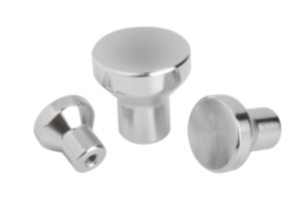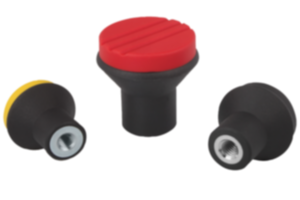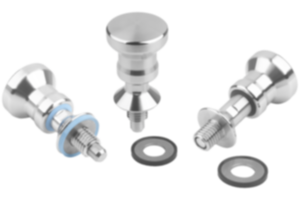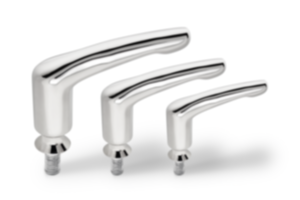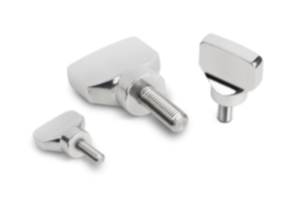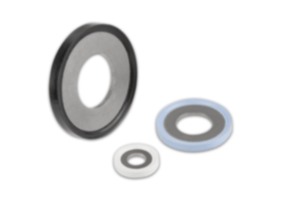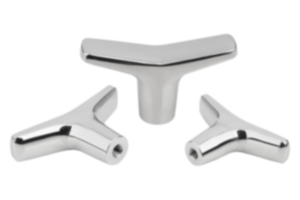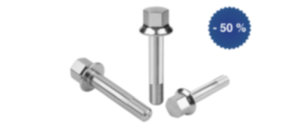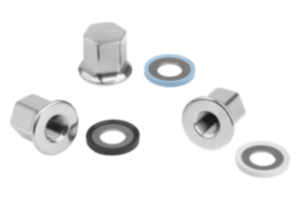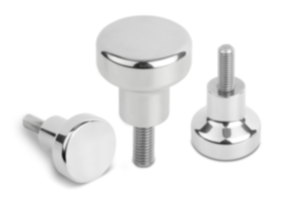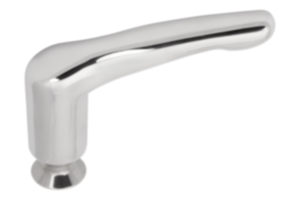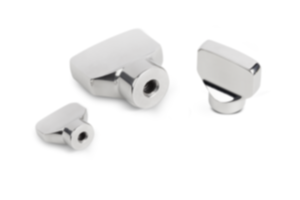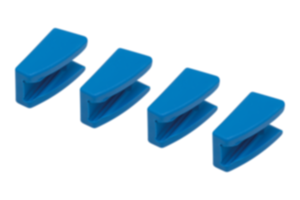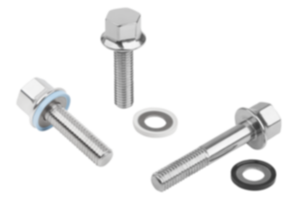Handwheels, cranks and handles for handwheels, position indicators
Handwheels
Handwheels, crank handles and position indicators by KIPP
This category "operating and standard parts" by KIPP includes three main products:
- handwheels
- crank handles
- position indicators
Handwheels
Handwheels are used to position and adjust shafts, valves, spindles and more. They were one of the first operating elements used in machine and plant construction and are still used today. As an elementary operating part and standard element in the mechanical sector, hardly anything can be achieved without handwheels. They ensure that rotary movements are transferred to a machine efficiently and quickly. Handwheels are usually used as a control element to make adjustments or settings by manually rotating them. Handwheels are also attached to instruments, machine tools or even transmission motors, where they are used to open and close valves for example.
KIPP handwheels are connected to the shaft via a parallel key and keyway connection, ensuring optimum adjustment on machines or instruments. A parallel key/keyway connection has a special benefit. It guarantees optimum torque transmission.
In addition to applications in machine and plant construction, handwheels are also used in:
- measuring equipment technology
- ship building
- defence systems
- equipment construction
Handwheel styles
KIPP offers a wide range of handwheels. Various materials, diameters and styles are available to customers from the overall range.
KIPP basically divides handwheels into three types:
2-spoke handwheels:
are available as a plastic or aluminium version.
Aluminium handwheels (light metal version) are particularly sturdy. The material also saves on weight and bulk, making them much easier to operate.
KIPP offers 2-spoke handwheels with revolving or fold-down grips, or even without grip.
Handwheels acc. to DIN 950
feature three spokes. The product range includes handwheels acc. to DIN 950 in both grey cast iron and aluminium.
Grey cast iron handwheels are especially sturdy and durable. Customers may chose between revolving or fixed grips.
Disc handwheels
are made of aluminium or thermoset. Thermoset disc handwheels are available either pre-drilled (Form D) or with a reamed hole (Form E).
The comprehensive product range is complemented by other handwheels made of thermoplastic and special handwheels with safety cylinder grips.
KIPP is also able to manufacture customised versions on request.
Crank handles
Crank handles are also known as hand cranks and, along with handwheels, were one of the first operating elements in machine and plant construction.
They are used for long adjustment ranges. Crank handles can be used for a wide range of applications in industry, trade and commerce. The easy and efficient force transmission facilitates use when moving heavy machine parts or for rough device settings.
Hand cranks are manufactured according to DIN and can be made of aluminium, steel, stainless steel or plastic.
The following crank handles are included in the KIPP range:
- offset crank handles similar to DIN 468
- straight crank handles similar to DIN 469
- aluminium crank handles
- aluminium crank handles with fold-down cylinder grips
- crank handles with fold-down cylinder grips
- aluminium and stainless steel crank handles with revolving cylinder grips
- thermoplastic and aluminium crank handles with safety cylinder grip
Position indicators
Position indicators are used to set and read values such as number of rotations, lengths travelled, volume and force. These mechanical or digital devices indicate the position of machine parts that are adjusted via a shaft. The shaft is mostly a threaded spindle.
If a machine part has to be adjusted, this is referred to as an adjustment process. Operating elements such as handwheels or crank handles are used for this process. The position indicator shows how far the machine part has to be moved. It facilitate the measurement of the adjustment range.
KIPP offers a comprehensive range of position indicators for industry and machine construction. In addition to mechanical position indicators, the range also includes digital position indicators and accessories such as magnetic sensors, intermediate and mounting plates as well as adjustment knobs with position indicator.
Mechanical position indicators
A hollow shaft mounted and locked directly onto the spindle drives the position indicator. Gear units in the indicator transfer the spindle rotations to the counter.
Mechanical position indicators are particularly suitable for small shaft diameters and short spindle distances. They feature a torque support that prevents the entire indicator rotating with the spindle. This is simply a pin of the housing that fits into a hole in the machine body. The hollow shaft is locked onto the spindle via a thrust screw.
These position indicators are characterised by their compact design and clear display.
Digital/Electronic position indicators
Electronic or digital position indicators display angles as well as uncommon spindle pitches. To do so, they record each fraction of spindle movement.
